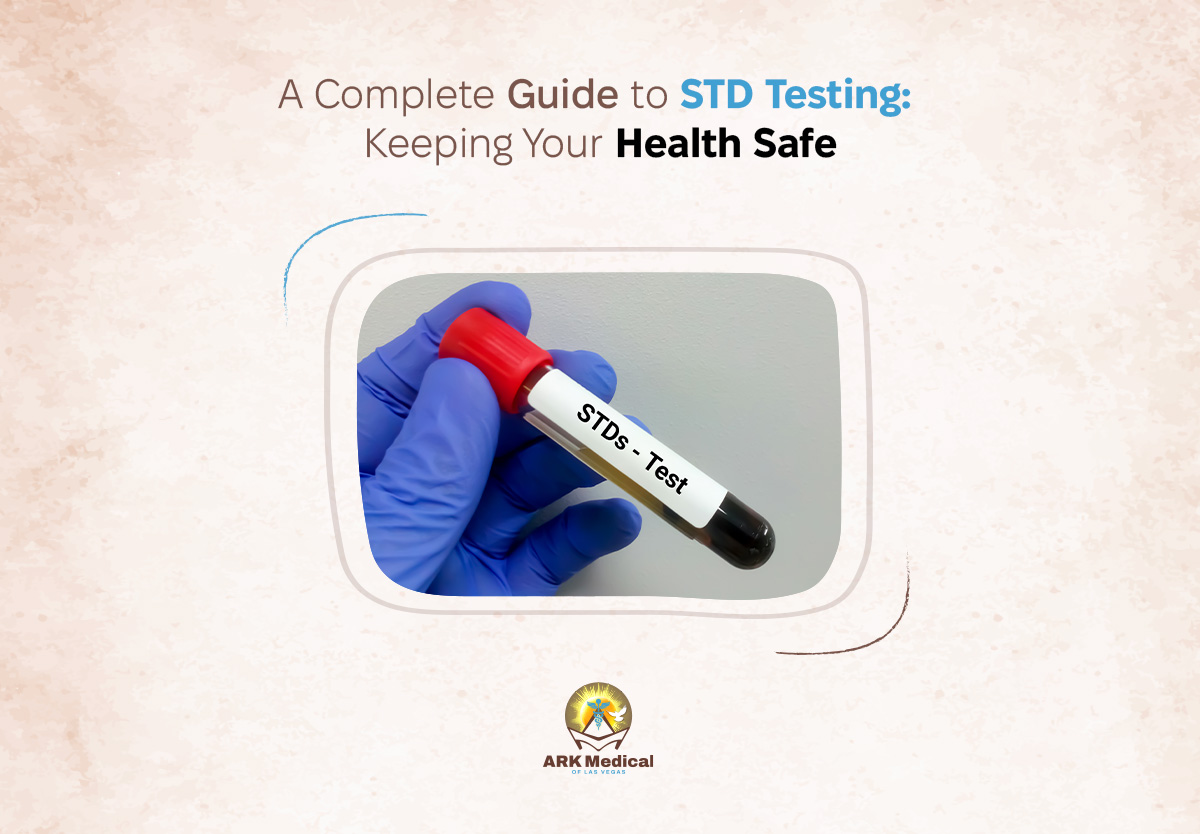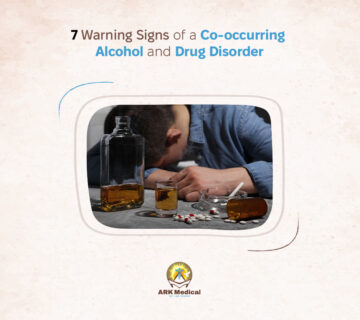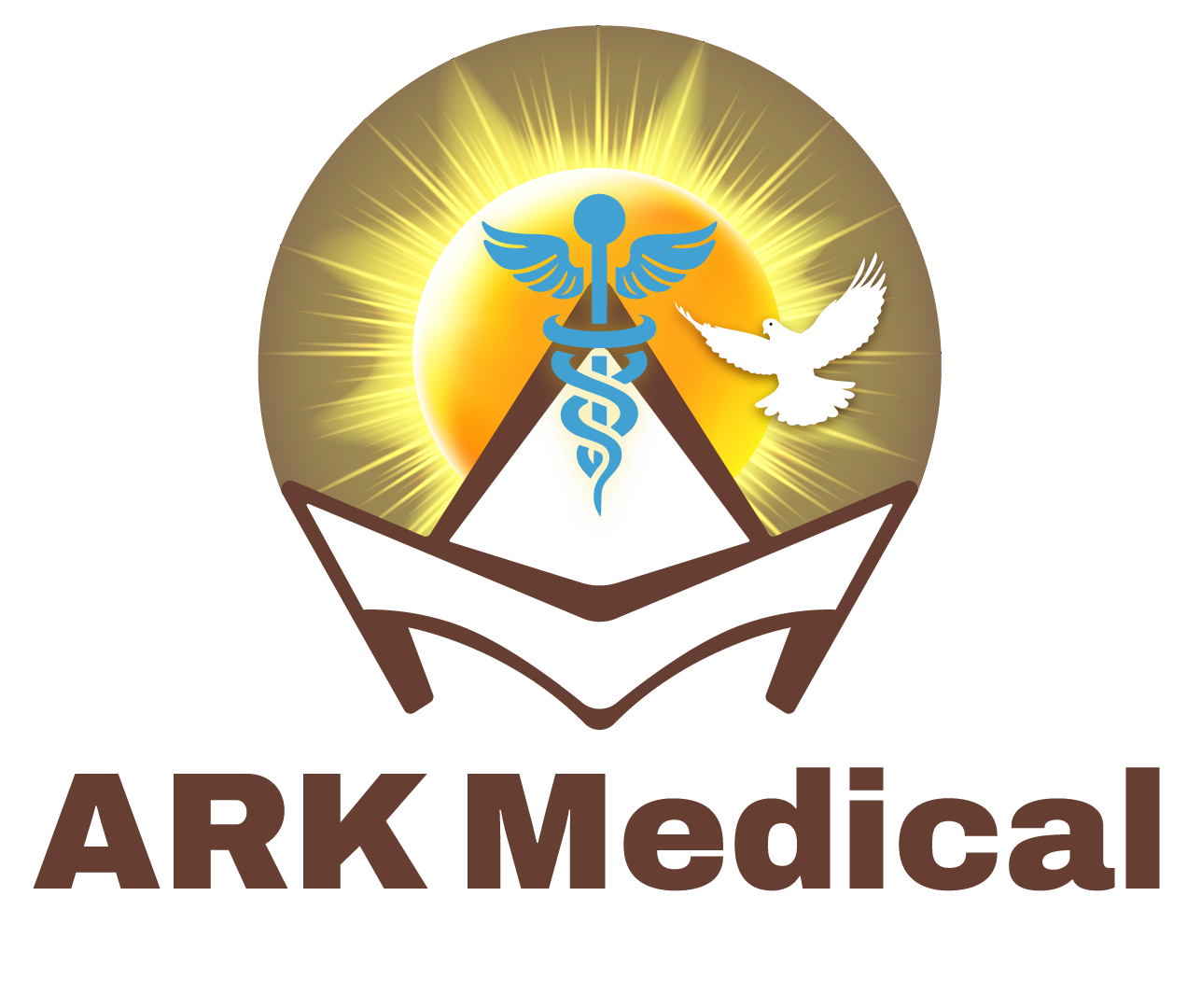Getting to Know STD Testing
Sexually transmitted diseases (STDs) are still a big public health problem in the United States. Every year, health statistics report millions of new cases of chlamydia, gonorrhea, and syphilis. These infections can have serious psychological effects, such as anxiety, stress, and shame, in addition to their physical symptoms. These effects can be detrimental to a person’s mental health.
The goal of this detailed guide is to make the process of STD screening less confusing. We will discuss the significance of regular testing for maintaining your sexual health and that of your partners. Knowing how the screening process works can help ease your worries and break down the stigma around STDs.
This article will discuss the basics of common STDs, why screening is important, when to get tested, how screening works, what to do after screening, common myths, and questions that people often have. Our goal is to give you the information you need to make smart choices about your health.
What are STDs? A Summary of Clinical Findings
Common Types of Sexually Transmitted Infections
Sexual contact primarily spreads sexually transmitted diseases (STDs), also known as sexually transmitted infections (STIs). Some can be treated, but others may need to be managed for the rest of their lives. A clinical understanding of the prevalent types is imperative.
Chlamydia is a bacterial infection that doesn’t always show symptoms. Possible symptoms are unusual discharge, dysuria (painful urination), or bleeding between periods. It can be passed on through vaginal, anal, or oral sex, and if not treated, it can cause infertility.
Gonorrhea is a bacterial infection, just like chlamydia. Some symptoms of gonorrhea include a burning sensation during urination and unusual discharge. Transmission occurs through vaginal, anal, or oral intercourse, and untreated instances may lead to severe complications, including disseminated gonococcal infection.
Syphilis: This bacterial infection usually starts with a sore that doesn’t hurt (chancre) and then gets worse with a rash and flu-like symptoms. You can contract it by touching a syphilitic sore directly. Early treatment with antibiotics works very well, but later stages can cause serious damage to organs.
HIV, or human immunodeficiency virus, is the virus that can lead to AIDS. The first signs are often like the flu. Blood, semen, and vaginal fluids are some of the bodily fluids that can spread HIV. Early diagnosis is essential because antiretroviral therapy lets people with HIV live long, healthy lives.
The herpes simplex virus (HSV-1 or HSV-2) causes herpes, which leads to sores on the mouth or genitals. It spreads when skin touches it directly. There is no cure, but antiviral drugs can help control outbreaks.
Human Papillomavirus (HPV): HPV is a group of viruses that can cause genital warts and some kinds of cancer. Skin-to-skin contact is how the disease spreads. Vaccines exist to prevent infection with high-risk HPV types.
Knowing about these STDs is the first step in finding and managing risks early.
Ways of spreading and the risks that come with them
Sexual contact, such as vaginal, anal, and oral sex, is the main way that STDs spread. HIV and some other infections can also be passed on through non-sexual means, such as sharing dirty needles or passing them from mother to child during childbirth. Another way that diseases like herpes and HPV can spread is through skin-to-skin contact with an infected area.
Some of the most important risk factors that make transmission more likely are:
Behavioral Risks: The most dangerous thing you can do is have sex without protection. Having multiple sexual partners without regular testing also increases risk.
Demographic Factors: Adolescents and young adults (ages 15-24) show higher infection rates, which is often due to having more partners and not always using condoms.
Using condoms correctly and consistently, getting tested regularly, and being open with sexual partners are all beneficial ways to avoid getting STDs.
Why Getting Tested for STDs Is Important
Health Benefits for Each Person
Routine STD testing makes it easier to find infections early, which is crucial for stopping long-term health problems like infertility, chronic pain, and damage to organs. For example, treating chlamydia quickly can stop pelvic inflammatory disease (PID) from happening.
From a psychological standpoint, obtaining a conclusive test result alleviates anxiety and instills a sense of reassurance in the face of uncertainty. Taking charge of one’s sexual health helps fight stigma and makes people feel more in control.
Physical Health: Early intervention and treatment can cure many bacterial infections and effectively manage viral infections.
Emotional Well-Being: Less stress and anxiety can lead to better mental health, such as better sleep and mood control.
Keeping your partner safe and your relationship healthy
Getting tested for STDs is a responsible thing to do for your sexual partners. Sharing test results can help build trust and make relationships stronger. A healthy and respectful relationship starts with open conversations about STD testing for couples.
Screening stops infections from spreading, which protects the health of partners and keeps the relationship strong. Such open communication often makes emotional closeness stronger.
Effects on Public Health
A key public health strategy for stopping the spread of STDs in communities is to screen people regularly and widely. Testing and raising awareness have been shown to lower the number of cases, which in turn makes it easier for healthcare systems to handle. The Centers for Disease Control and Prevention (CDC) says that screening is a cost-effective way to save lives and resources.
Suggested Schedule for STD Testing
Official Guidelines for Screening
- Depending on age, sex, and sexual activity, different screening tests are recommended. The CDC says that all sexually active women under 25 should get tested for chlamydia and gonorrhea every year. It is also suggested that everyone between the ages of 13 and 64 get tested for HIV at least once as part of their regular medical care.
- For women, HPV testing should be done every 3 to 5 years, along with Pap smears. The exact time depends on the woman’s age and previous results.
- High-risk men, such as those who have sex with men (MSM), should get tested more often.
If you have sex with someone without protection or get a new sexual partner, you should get tested.
Signs that need to be checked out right away
Even though many STDs don’t show any signs or symptoms, some do and need to be checked out right away. These include strange discharge from the genitals, sores or lesions, itching, or a burning feeling when urinating. You should also get tested if you have systemic symptoms like flu-like aches or a rash all over your body.
Getting medical help right away is crucial for both your physical and mental health. If your symptoms are making you very upset, you should see a mental health professional.
Things to consider for special groups
Different groups of people have different needs for screening.
- Adolescents: Sexually active teens should get screened once a year because they are more likely to do risky things.
- Early prenatal screening for chlamydia, gonorrhea, syphilis, and HIV is essential for pregnant women to stop the virus from spreading to their babies.
- LGBTQ+ People: The CDC says that gay and bisexual men who are sexually active should get tested for syphilis, chlamydia, and gonorrhea every three to six months.
- Older Adults: Older adults who are sexually active should not skip screenings because the risks last a lifetime.
A Step-by-Step Guide to the STD Screening Process
Choosing a Place to Test
There are many types of tests available to meet different needs and preferences. Medical clinics offer a full range of services, but at-home testing kits are a more private option.
- Community health centers often offer services for free or at a low cost.
- Clinical Visits: You can get expert advice, but you might have to wait.
- Home kits are convenient, but you should make sure they are accurate and have been approved by the government.
- Cost: A lot of insurance plans pay for STD testing. There are also many clinics that are cheap or free.
- Pick the choice that works best for your situation.
Getting ready for an STD test
- Be ready to show your ID and insurance information when you go to the clinic. Your doctor will ask about your sexual history to assess your risk.
- Get ready by knowing that screening is a quick and normal process. If you’re feeling anxious, try deep breathing or talking to a friend you trust about what’s bothering you.
The Process of Screening
- Most STD tests don’t hurt.
- Chlamydia and Gonorrhea: Usually diagnosed with a urine test.
- HIV and syphilis can be found through a blood test.
- Other Infections: You might need to swab the area that hurts.
- Usually, results come back in a few days to a week. If any results are positive, a
- follow-up consultation will be set up.
Procedures and protocols after screening
How to Read Your Test Results
- A negative result means that there was no infection found when the test was done.
- It is important to continue having safe sex. If the test comes back positive, it means you are infected and need to start treatment.
- Don’t freak out if you get a positive result. If you need emotional support, talk to a mental health professional and do what your doctor says.
Different ways to treat that work
- You can treat many STDs with medicine.
- Antibiotics can treat bacterial infections such as chlamydia, gonorrhea, and syphilis, typically with a single dose or a brief course of medication.
- Antiviral drugs are used to treat viral infections like HIV and herpes. Taking medicine every day can lower HIV levels to the point where they can’t be found.
Following the treatment plan exactly is critical for a good outcome.
Strategies for follow-up and prevention
It is common to recommend follow-up testing, usually three months after treatment, for some infections, to make sure it worked. The HPV vaccine is a beneficial way to stop the virus from spreading. Using condoms every time is still one of the most important ways to avoid STDs. Making a habit of regular health check-ins can help you stay healthy in the long run, both physically and mentally.
Common Misconceptions Regarding STD Testing
False information can make it difficult to be tested. It is important to use facts to dispel these common myths.
Myth: Only people who have sex with more than one person contract STDs.
Fact: Anyone who has sex can contract an STD. It has nothing to do with character; it’s just exposure.
Myth: You can always tell when you have an STD.
Fact: Some infections, like chlamydia and early-stage HIV, don’t show any symptoms. You can only be sure of your status by getting tested.
Myth: There is no risk in oral sex.
Fact: Oral sex can spread infections like herpes, gonorrhea, and syphilis.
Myth: Getting tested for STDs hurts and is embarrassing.
The procedures are indeed quick, don’t require much surgery, and are kept secret. Healthcare professionals are trained and don’t judge their patients.
Myth: You can’t get an STD again after you treat it.
Fact: You can contract some STDs again. It is important to continue preventing things.
To improve public health and encourage people to take care of their health, it is important to dispel these myths.
Common Questions (FAQs)
What makes an STD different from an STI?
The term “sexually transmitted disease” (STD) usually means that there are symptoms, while “sexually transmitted infection” (STI) can mean an infection that doesn’t show any symptoms. In clinical practice, the terms are frequently used interchangeably.
How reliable are the STD tests you do at home?
Many at-home tests sold in stores are very accurate when used correctly. But you should get a follow-up test at a medical facility to make sure that any positive results are correct.
Could getting tested for STDs hurt my mental health?
The screening process can make you anxious for a short time, but getting a clear answer usually lowers stress and uncertainty in the long run. If you’re in a lot of pain, it’s best to talk to a mental health professional for help.
If I have more than one partner, how often should I get screened?
People who have more than one sexual partner should think about getting tested every three to six months or after each new partner.
Is it safe to get tested for STDs?
Yes, privacy laws regarding health information, like HIPAA in the United States, protect the results of STD tests. Your results are private.
If I’m pregnant and have an STD, what should I do?
Getting treatment right away is crucial for your baby’s health. STD testing is a normal part of prenatal care.
Are there any free STD testing options?
Yes, a lot of public health departments, community health centers, and groups like Planned Parenthood offer testing for free or at a low cost.
Can all STDs be treated?
Antibiotics can get rid of bacterial STDs like chlamydia and syphilis. Long-term treatment can help people with viral infections like HIV and herpes, but they can’t be cured.
How can I talk to my partner about getting tested for STDs?
Be honest when you talk about it, and frame it as a shared commitment to health. If you suggest that you be tested together, the conversation can be more collaborative.
What should you do next if the test comes back positive?
If you test positive, you should start the treatment your doctor tells you to. You should also tell your sexual partners so they can get tested and treated. Most STDs are common and easy to treat, so focus on getting better.
Conclusion
Getting tested for STDs is a great way to take charge of your health. It is very important for your mental and physical health, as well as for your relationships. Finding out about a problem early leads to better health and less stress.
We suggest that you act today by scheduling an appointment for an STD test. Share this information to help other people learn. Taking care of your sexual health now will help you have a healthier and more confident future.





